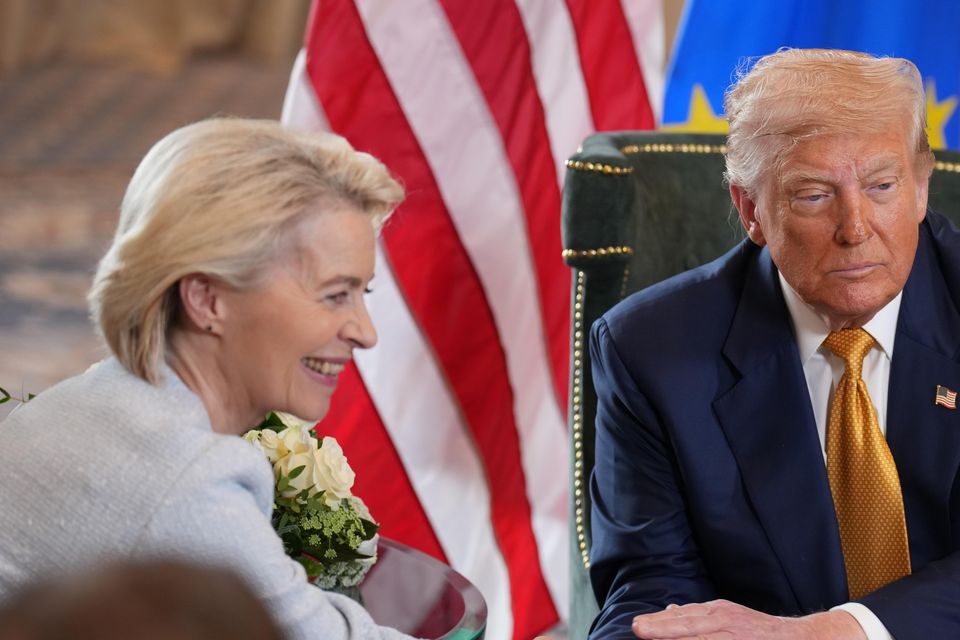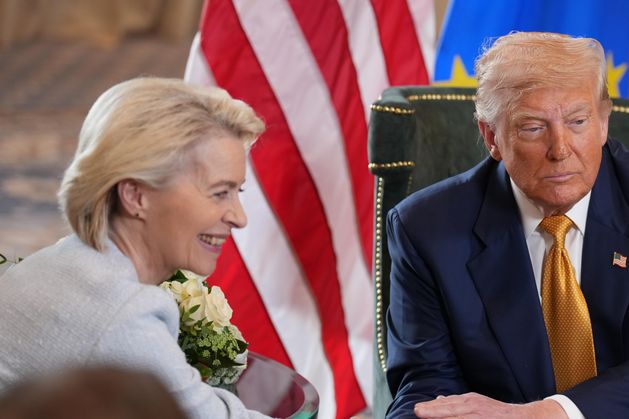According to the Central Statistics Office, exports to the US decreased by €909m, or just over 17pc, to €4.4bn in July compared to the same month last year.
America is Ireland’s top exporting partner, buying just over a quarter of all our goods. It is followed by the Netherlands and Germany.
Overall, the value of goods exports decreased by €919.2m, or just over 5pc, last month compared to July 2024. This means there has been a return to more normal trading patterns after the warping effect of US President Donald Trump’s trade policy.
Last April, Trump introduced a “baseline” 10pc tariff on imports from all countries, including the EU. In late July, however, Trump and Ursula von der Leyen, president of European Commission, did a handshake deal on a 15pc tariff regime for most goods. This took effect from August 1.
Medical and pharmaceuticals account for the largest share of Irish exports, at just over 40pc. The value of exports in that category fell by €106.2m last month, or by 1.5pc. Up to recently, it was unclear if a Section 232 investigation by the White House would lead to a higher tariff level being imposed on pharma, but it has since been confirmed that it will be covered by the 15pc rate.

European Commission president Ursula von der Leyen and US president Donald Trump did a trade deal in Scotland in July. Photo: Getty
Today’s News in 90 Seconds – Monday, September 15
Jane Burmanje, a statistician in the CSO’s international trade division, said: “July 2025 marked the second consecutive month of falling exports of medical and pharmaceutical products.”
The most eye-catching decline was in exports of organic chemicals, which fell by €1.1bn, or over 47pc, compared to July 2024.
The decline in exports to America in July followed a similar slump in June, when sales were down year-on-year by €1.3bn, or 23.4pc.
Janette Maxwell, a tax partner at Grant Thornton Ireland, said the figures highlight the ongoing fluctuation in global trade.
“A variety of factors are likely to be at play such as stockpiling earlier in the year in anticipation of potential tariffs, as well as currency and cost pressures. A stronger euro and increased production costs may have also reduced competitiveness in the US market,” she said.
Meanwhile, new figures also show that the US industries most exposed to the uncertainty over tariffs have reduced their hiring, and even started to lay off workers. Energy, wholesale retail and manufacturing have all recorded job losses, according to a report for August, which showed that the US economy added only 22,000 jobs in the month.
Imports to Ireland were also down last month, with the value falling by €92.1m year-on-year, or just under 1pc, to €12bn. However, imports of medical and pharma products were up – rising by €1.2bn to €2.5bn in July. This category represented about one fifth of all imports.
Approximately 14pc of all imports come from America, making it our second-largest trading partner for inward goods after Germany.
The new trade deal between the US and the EU includes the elimination of tariffs on industrial goods coming from America into the bloc, and preferential market access for a range of US seafood and non-sensitive agricultural products.
